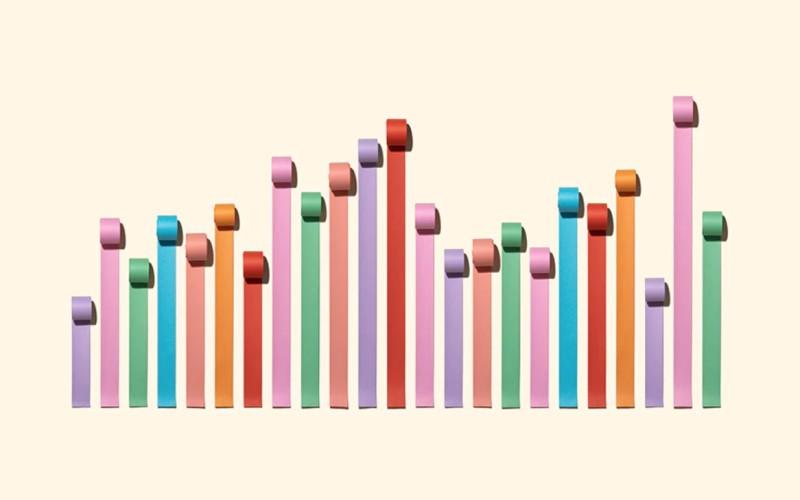by Kathy Jones, Head of Fixed Income, Charles Schwab & Company
Our view was that the result would be rising interest rates and higher volatility, especially in the riskier segments of the markets. We suggested investors consider reducing duration and start being cautious about the credit quality in their fixed income portfolios.
The tide has rolled out

Illustration by Charlos Gary. © 2021 Charles Schwab & Co., Inc.
There has been a parallel shift up in yields in the Treasury market, for bonds with maturities of two years or greater, as markets adjusted to the swift move toward tightening by the Fed. That resulted in a sharp decline in the prices of intermediate- and long-term bonds that are most sensitive to interest rate changes.
The yield curve has shifted upward this year

Source: Bloomberg, data as of 12/31/2021 and 5/31/2022.
A yield curve is a line that plots yields (interest rates) of bonds having equal credit quality but differing maturity dates. The slope of the yield curve gives an idea of future interest rate changes and economic activity. Past performance is no guarantee of future results.
We estimate that the target range for the federal funds rate will end the year at 2.25% to 2.5%. Ten-year Treasury yields will likely trade in a 2.5% to 3.0% range but end the year closer to the low end of that range.
Federal Reserve policy outlook
In addition, the Fed will be reducing the amount of bonds it holds. The current plan is to eventually allow up to $95 billion in bonds ($60 billion in Treasuries and $35 billion in mortgage-backed securities, or MBS) to mature without reinvestment. The plan suggests that the Fed is aiming to cut the size of the balance sheet back to pre-pandemic levels over the next few years.
The Fed's balance sheet has ballooned to more than $8 trillion

Source: Bloomberg.
Reserve Balance Wednesday Close for Treasury Bills, Treasury Notes, Treasury Bonds, Treasury Inflation Protected Securities (TIPS), and Mortgage-Backed Securities. Weekly data as of 5/25/2022.
Fed rate hike expectations have declined since early May

Source: Bloomberg.
Federal funds futures implied rate (FFN2 COMB Comdty) using monthly expectations through December 2023, as of 5/3/2022 and 5/31/2022, respectively. For illustrative purposes only.
Two-year yields are rising in most major countries

Source: Bloomberg.
U.S. (USGG2YR Index), Germany (GTDEM2Y Index), Italy (GTIT2Y Index), Greece (GTGRD2Y Index), U.K. (GTGBP2Y Index), Canada (GTCAD2Y Index). Daily data as of 5/31/2022. Past performance is no guarantee of future results.
Financial conditions have tightened
Aside from the pandemic-induced plunge in March 2020, the Bloomberg U.S. Financial Conditions Index reading is now the tightest since 2018—near the end of the last Fed tightening cycle.
Bloomberg U.S. Financial Conditions Index

Source: Bloomberg.
Bloomberg U.S. Financial Conditions Index (BFCIUS Index), daily data as of 5/31/2022. Y-axis is truncated at -2.0 for scaling purposes. For reference, the low occurred on 3/24/2020 and was -6.33. Note: The Bloomberg U.S. Financial Conditions Index tracks the overall level of financial stress in the U.S. money, bond, and equity markets to help assess the availability and cost of credit. A positive value indicates accommodative financial conditions, while a negative value indicates tighter financial conditions relative to pre-crisis norms.
Rising real yields act to slow the economy by raising the hurdle rate that investors need to achieve over the risk-free (i.e., Treasury) rate. When money is cheap, borrowing and investing in even the riskiest markets can look attractive compared to negative returns in cash. However, as real yields rise, the hurdle rate needed to achieve attractive returns rises. Consequently, speculation and investment tend to slow as real rates move up.
It's not surprising that the most speculative and highly leveraged assets, which rely on ample amounts of liquidity to support valuations, are showing the biggest declines in the markets.
Real yields have moved higher this year

Source: Bloomberg.
US Generic Govt TII 10 Yr (USGGT10Y INDEX), US Generic Govt TII 5 Yr (USGGT05Y INDEX) US Generic Govt TII 5 Yr (USGGT30Y INDEX). Daily data as of 5/23/2022. Past performance is no guarantee of future results.
Rising recession risk
Even with the rising risk of recession, it's worth noting that each one is unique. The current environment seems most similar to the early 1980s. Inflation was high in large part due to oil price spikes. In response, the Fed raised nominal and real interest rates aggressively. The economy was otherwise relatively healthy, with a solid banking system and consumers who weren't overextended on debt. Nonetheless, there were two steep back-to-back recessions during that time period, from January to June 1980, and from July 1981 to November 1982. Housing and manufacturing experienced sharp declines and the unemployment rate soared to double-digit levels.
While the Fed is determined to push inflation lower, there's a good chance it won't have to go to the extremes of the early 1980s. Demographic trends are far different with the U.S. population aging. That tends to result in slower growth and inflation. Another key difference in policy this time around is the use of "forward guidance" by the Fed. In the 1980s the Fed provided very little information about its plans to the markets. Consequently, rate hikes often surprised investors, consumers, and businesses—increasing volatility. This time around the markets should be able to anticipate changes, mitigating some of the surprise factor that can create added volatility.
Currently, the economy is already starting to show signs of slowing down as interest-rate-sensitive industries like housing experience declining sales, manufacturing orders slow, and corporate profit growth flattens—all indicators that point to rising recession risk.
Plummeting home sales is evidence that Fed tightening is slowing the economy

Source: U.S. Bureau of the Census.
New One Family Houses Sold: United States, Units: Thousands, Seasonally Adjusted Annual Rate (NHSLTOT Index). Monthly data as of 5/31/2022.
TIPS 10-year breakeven level suggests investors don't expect raging inflation

Source: Bloomberg.
U.S. Breakeven 10 Year (USGGBE10 Index). Daily data as of 5/31/2022. The 10-year breakeven rate is calculated as the difference between the 10-year Treasury rate and the 10-year Treasury Inflation-Protected Security (TIPS) rate. Market participants use this value as what they believe the expected inflation should be in the next 10 years, on average.
Strategy: Less credit exposure/more duration
If we're right that the economy slows and inflation expectations ease, the Fed may not need to raise the federal funds rate beyond the 2.5% to 2.75% level. That should mean that intermediate- to long-term bond yields could edge lower.
Our preferred strategy is to gradually increase duration of bonds in portfolios at these higher yields. However, we favor higher-credit-quality core bonds, such as Treasuries and investment-grade corporate and investment-grade municipal bonds. In most cycles, yields tend to converge near the peak of the federal funds rate for the cycle. In the 3% region, yields have already discounted Fed tightening beyond the neutral rate.
In past cycles, 10-year yields and the federal funds rate have converged near market peaks

Source: Bloomberg.
Effective Federal Funds Rate, (FEDFUNDS) and 10-Year Treasury Constant Maturity Rate, Percent, Monthly, Not Seasonally Adjusted (DGS10). Data as of 5/23/2022. Past performance is no guarantee of future results.
Cautious on credit
Meanwhile, we do see potential opportunities for fixed income investors to benefit from the rise in rates. Yields on many fixed income asset classes have risen sharply since late last year. After years of low yields that drove investors to allocate more to risky investments, income investors can find attractive yields in higher credit quality fixed income. Investment-grade corporate and municipal bonds are offering higher yields than we have seen in several years, and can help investors earn income without excessive risk-taking.
Yields in fixed income investments are well above dividend yields for the first time in several years

Source: Bloomberg, as of 5/31/2022.
Indexes represented are: HY Corporates = Bloomberg U.S. Corporate High-Yield Bond Index; EM USD Bonds = Bloomberg Emerging Market USD Aggregate Index; Preferreds = ICE BofA Fixed Rate Preferred Securities Index; IG Corporates = Bloomberg U.S. Corporate Bond Index; MBS = Bloomberg U.S. MBS Index; U.S. Aggregate = Bloomberg U.S. Aggregate Bond Index; Municipal Bonds = Bloomberg U.S. Municipal Bond Index; Treasuries = Bloomberg U.S. Treasury Index; and Dividend Aristocrats = S&P 500 Dividend Aristocrats Index (Dividend Aristocrats). Yields shown are the average yield-to-worst except for the Dividend Aristocrats, which is the average dividend yield. Past performance is no guarantee of future results.
2 One basis point is equal to 1/100th of 1%, or 0.01%, or 0.0001. Thus a 50-basis-point change is equal to 0.5% or one half percentage point.














